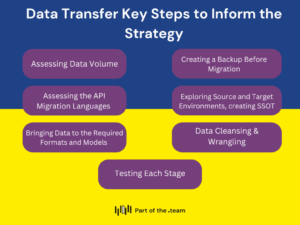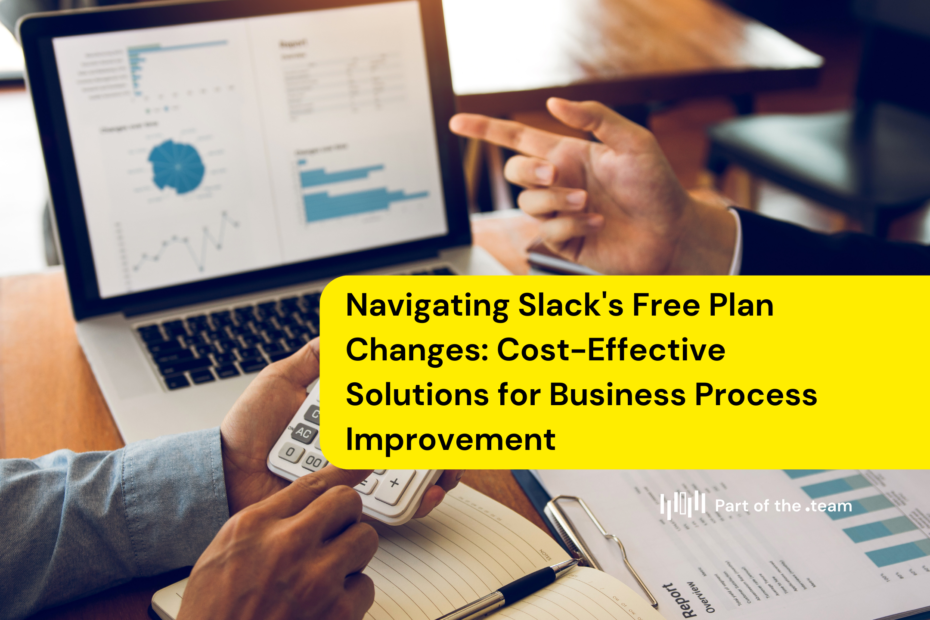The Client’s Need for Change, Could it be AI?
Recently a service-based business came to us saying “My current processes are fine, we don’t have a large number of clients, and all our team are legal experts, but I know there are benefits to be had from AI”
So we took them back a few steps and asked questions about their existing processes and software. It was clear that there were many benefits to be gained from basic automations before going for the ones on steroids and jumping straight in with AI.
As part of the brave new world of digital transformation, the client wanted to change its hero package basing its business around a project management system rather than its existing time logging system.
Our role within the bigger project was to help with business app integrations later on in the process once the new hero platform was up and running, not specifically conduct the migration. Nevertheless, we offered feedback on the number of project management platforms being considered and gave tips and pointers. This is because without the migration, we could not implement the integrations and automations in the wider business.
Their primary goal was to gain better control over project resources and business performance. This transition promised improved visibility, enhanced collaboration, and more robust reporting capabilities.
Typical Steps in a Data Migration Process
A successful data migration typically involves several key steps:
- Planning and Assessment: Defining goals, understanding data structures, and identifying potential risks.
- Data Preparation: Cleaning, standardizing, and transforming data to align with the target system.
- System Setup and Configuration: Configuring the new system to meet specific requirements.
- Migration Execution: Implementing the migration plan and validating the migrated data.
- Testing and User Acceptance: Ensuring data accuracy and obtaining stakeholder approval.
- Cutover and Go-Live: Switching to the new system and providing user training.
- Post-Migration Support: Monitoring performance, gathering feedback, and optimizing processes.
The elements in the first four steps can be particularly complex, requiring a number of activities often not obvious to the untrained eye. It’s tempting to rush them to maintain business as usual, but skipping the time to create a Single Source of Truth within a Sandbox can be a major hindrance later. This SSOT step helps you identify the difference between the old and new systems so that you can be prepared for new ways of working to achieve higher outcomes than you previously had. After all, there is little point in changing systems if there aren’t step-change benefits for you. The chart below shows you some of the activities behind the scenes of data migration.

Challenges in Following the Ideal Migration Path
Unfortunately, it wasn’t possible to follow the ideal migration path in this case. The client insisted on replicating their exact hierarchical project structure from its time-logging set up in the new relational database board-based project management system. This approach, while seemingly convenient in the short term, prevented them from fully leveraging the powerful features and capabilities of the new platform.
Missed Opportunities and Future Remedial Actions
By insisting on maintaining their existing hierarchical project structure onto Monday.com’s board-based approach structure, the client encountered several limitations:
- Suboptimal Task Management: The board-based task organization in Monday.com is hindered, making it harder to visualize and manage tasks effectively.
- Limited Collaboration and Visibility: Missing out on the benefits of seamless collaboration, commenting, and real-time updates within project boards.
- Restricted Workflow Automation: Difficulties in fully leveraging Monday.com’s automation engine, leading to manual workarounds and inefficiencies and the need for additional app subscriptions..
- Reporting and Dashboard Limitations: The hierarchical structure limits the ability to generate meaningful reports and dashboards.
- Integration Challenges: Compatibility issues arise when integrating with other tools, as these integrations are designed for Monday.com’s native approach.
This is not to say the benefits weren’t gained from migrating over to Monday.com, it’s just that they were just scratching the surface of the system’s capabilities.
In the future, remedial actions may be necessary to fully utilize Monday.com’s capabilities. This could involve:
– Gradually restructuring projects to align with Monday.com’s board-based approach
– Providing additional training on Monday.com’s unique features
– Implementing automation and integrations to streamline workflows
– Customizing dashboards and reports to improve data visibility and decision-making
Tips for Business Leaders Planning a System Migration
- Be open to change: Embrace the new system’s strengths rather than trying to replicate old processes.
- Invest in training: Ensure your team understands how to leverage the new system’s features.
- Start with a pilot project: Test the new system with not just a small team before full implementation, but a small number of live projects.
- Involve key stakeholders: Gather input from various departments to ensure the new system meets diverse needs.
- Focus on long-term benefits: Consider how the new system can improve efficiency and productivity over time and be prepared to take a little time to get it right before switching everything over.
- Plan for data cleaning: Use the migration as an opportunity to clean and organize your data and consider new working practices as a team.
- Prioritize change management: Communicate clearly and often about the reasons for the change and its benefits.
- Don’t worry it doesn’t feel ‘fully done’. Continuously optimize processes and configurations based on real-world usage and feedback.
- Reflect and keep learning. Develop a plan for ongoing maintenance, updates, and enhancements to ensure long-term success.
Seeking Expert Guidance
Even when the new platform claims to be easy to use and set up navigating a system migration can be complex, especially when moving between platforms with different approaches to project management. For personalized guidance on how to make the most of your migration process and fully leverage your new system’s capabilities, we encourage you to reach out to POTT. Our team of experts can help you develop a tailored strategy that aligns with your business goals while minimizing disruption to your operations.
By learning from this experience and applying these best practices, businesses can ensure a smoother transition when migrating to a new system, ultimately reaping the full benefits of their investment in new technology.
